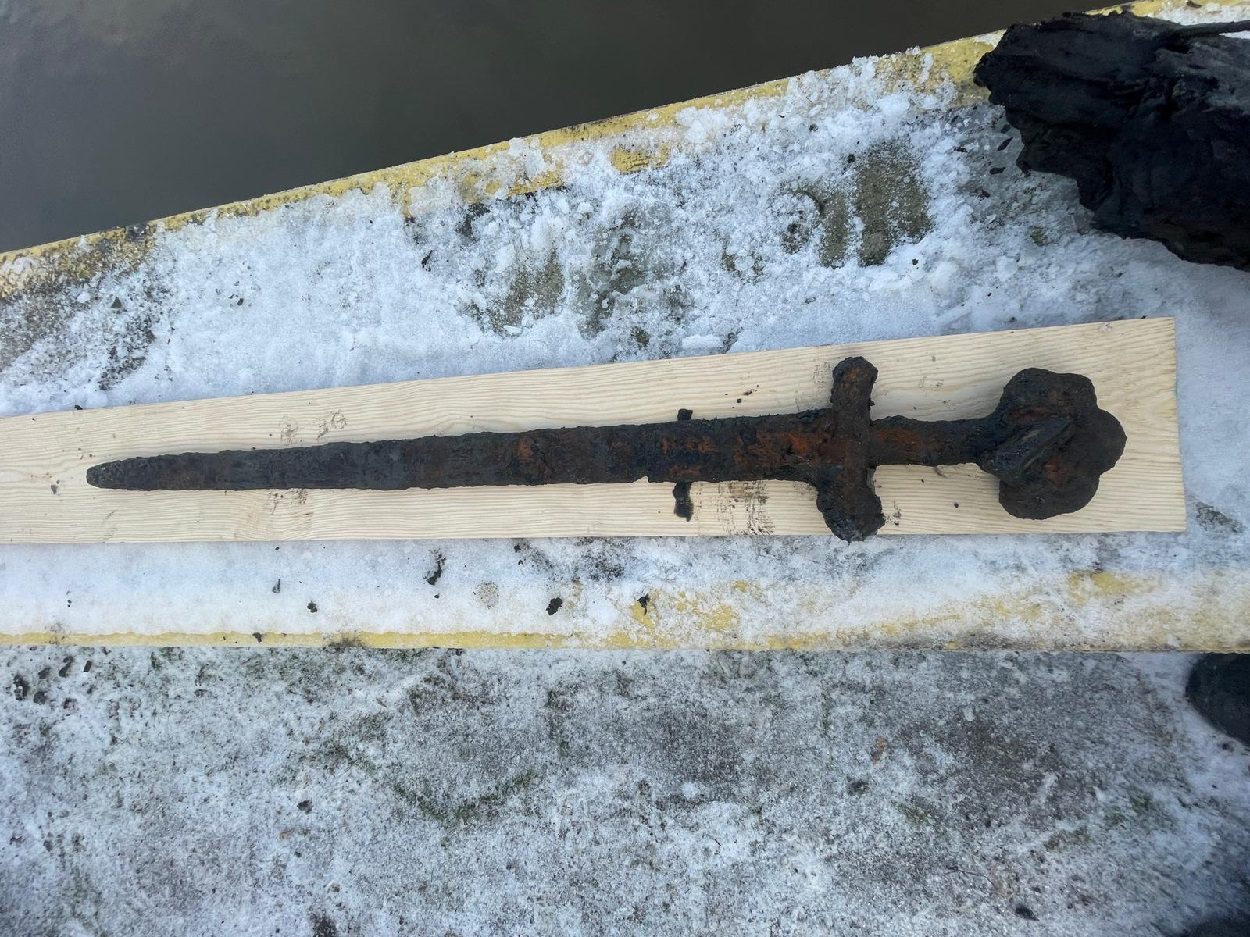The Sports and Recreation Centre in Włocławek has announced the recovery of a sword from the Vistula River in Włocławek, Poland.
The discovery was made during dredging works on a marina, revealing the partially visible weapon in the river sediment which was reported to the Provincial Office for the Protection of Monuments (WUOZ).
The sword was sent to the Nicolaus Copernicus University in Torun for further inspection and an X-ray analysis, indicating a probable origin date to around AD 950.
Researchers from the Provincial Office for the Protection of Monuments have suggested that the sword is of the Ulfberht type, a transitional weapon between the Viking sword and the evolution of the medieval knightly sword.
Although presumed to have Frankish origins, the majority of these sword types have mainly been discovered in Northern Europe, and Instead of being commodities for trade, they were most likely exported as loot, ransom, or contraband.
Sambor Gawiński, from the Provincial Conservator of Monuments, said: “About 170 Ulfberht swords have been found in Europe so far,” with most being discovered around the Baltic Sea and Scandinavia.
There was a precisely defined admixture of carbon in the steel used in the production of such swords. “It gave this weapon appropriate power, flexibility, flexibility and durability,” said the provincial conservator of monuments.
The Vikings used such swords, but they did not produce them. Their production probably took place somewhere in Western Europe, but it is not yet known exactly where.
Professor Wojciech Chudziak from the Nicolaus Copernicus University in Toruń has suggested that the sword may have been a Viking warrior’s weapon. This is supported by the fact that a major sea and land routes intersected near Włocławek from Kujawy, Mazovia, and even towards Kievan Rus’.
Header Image Credit : Ośrodek Sportu i Rekreacji Włocławek





